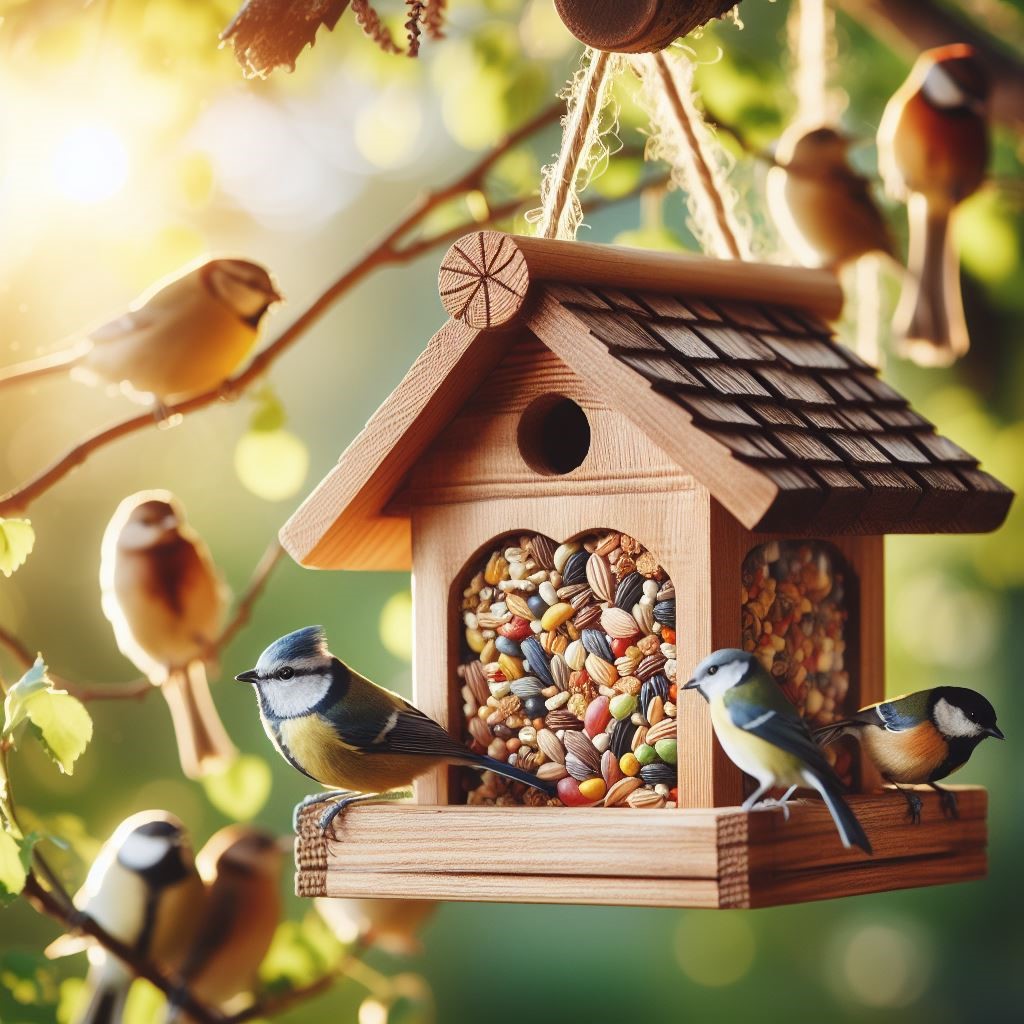Bird watching is a beloved hobby for many nature enthusiasts. Whether you’re a seasoned birdwatcher or just starting out, attracting birds to your backyard feeder can provide hours of enjoyment and opportunities for observation. In this article, we’ll explore various tips and techniques to help you attract a diverse array of bird species to your feeder.

Choosing the Right Bird Feeder
Selecting the appropriate bird feeder is crucial for attracting birds to your yard. Consider factors such as size, design, and durability when making your choice. Opt for feeders that are easy to clean and refill to ensure a steady supply of food for visiting birds.
Selecting the Ideal Location
The location of your bird feeder plays a significant role in its effectiveness. Place the feeder in a quiet area away from heavy foot traffic and potential disturbances. Optimal locations include near trees or shrubs where birds can perch and feel safe while feeding.
Providing the Right Food
Different bird species have varying dietary preferences. Research the types of birds common to your area and provide suitable food options accordingly. Popular choices include sunflower seeds, millet, and suet cakes. Offering a variety of foods can attract a diverse range of bird species to your feeder.
Keeping the Feeder Clean
Maintaining cleanliness is essential for attracting birds and preventing the spread of disease. Regularly clean the feeder and remove any debris or mold that may accumulate. Use mild soap and water for cleaning, and disinfect the feeder periodically to ensure a healthy environment for visiting birds.
Creating a Bird-Friendly Environment
Enhance your outdoor space to make it more appealing to birds. Plant native flowers and shrubs that provide natural food sources and shelter. Consider adding a birdbath or fountain to provide birds with access to fresh water for drinking and bathing.
Patience and Persistence
Attracting birds to your feeder may take time and patience. Be consistent with your efforts and maintain a regular feeding schedule. Over time, birds will become accustomed to the presence of the feeder and will visit more frequently.
Common Mistakes to Avoid
Avoid common mistakes that may deter birds from visiting your feeder. These include placing the feeder too close to windows, using poor-quality food, and neglecting to clean the feeder regularly. Addressing these issues can significantly increase the likelihood of attracting birds to your yard.
Attracting Specific Bird Species
Certain bird species may require specific strategies to attract them to your feeder. Research the habits and preferences of desired species and tailor your feeding setup accordingly. This may include offering specialized feeders or food options designed to attract specific birds.
Using Bird Calls and Sounds
Bird calls and sounds can be effective tools for attracting birds to your feeder. Play recordings of bird calls or use bird-friendly soundscapes to create an inviting atmosphere. Be mindful not to disturb neighboring wildlife or use excessive volume.
Utilizing Visual Aids
Visual cues such as colorful decorations or reflective surfaces can help attract birds to your feeder. Hang wind chimes or brightly colored ribbons near the feeder to catch the attention of passing birds. Experiment with different visual stimuli to see what works best in your environment.
Dealing with Predators
Take precautions to protect visiting birds from potential predators such as cats or squirrels. Position the feeder away from hiding spots where predators may lurk and use deterrents such as motion-activated sprinklers or predator guards to keep them at bay.
Monitoring and Maintenance
Regularly monitor your feeder for signs of wear or damage and make any necessary repairs promptly. Keep the feeder stocked with fresh food and clean water to encourage repeat visits from birds. Periodically assess the effectiveness of your setup and make adjustments as needed.
Encouraging Nesting
Create a welcoming environment for birds to nest and raise their young. Provide nesting materials such as twigs, leaves, and grass clippings, and avoid pruning trees and shrubs during the breeding season. By offering suitable nesting sites, you can attract birds to your yard year after year.
Conclusion
Attracting birds to your bird feeder can be a rewarding and fulfilling experience. By following the tips and techniques outlined in this article, you can create an inviting environment that attracts a diverse array of bird species to your yard. Remember to be patient and persistent, and enjoy the beauty and wonder of nature right outside your window.
FAQs
- How long does it take for birds to start visiting a new feeder?
- The time it takes for birds to discover and frequent a new feeder can vary depending on factors such as location, food offerings, and bird species present in the area. In general, it may take anywhere from a few days to several weeks for birds to start visiting regularly.
- What types of food are most appealing to birds?
- Different bird species have varying dietary preferences, but some popular food options include sunflower seeds, nyjer seed, suet cakes, and mealworms. Research the types of birds common to your area to determine the best food choices for attracting them to your feeder.
- How can I prevent squirrels and other pests from raiding my bird feeder?
- There are several strategies you can employ to deter squirrels and other pests from accessing your bird feeder, including using squirrel-proof feeders, adding baffles or barriers, and placing the feeder in a location that’s difficult for pests to reach.
- What should I do if I notice sick or injured birds visiting my feeder?
- If you encounter sick or injured birds at your feeder, it’s essential to proceed with caution. Contact your local wildlife rehabilitation center or animal control agency for guidance on how to safely assist the bird and provide appropriate care.
- How can I attract specific bird species to my feeder?
- Research the habits, preferences, and habitat requirements of the bird species you wish to attract, and tailor your feeding setup accordingly. Offer food options and feeder designs that cater to the needs of specific bird species to increase the likelihood of attracting them to your yard.






